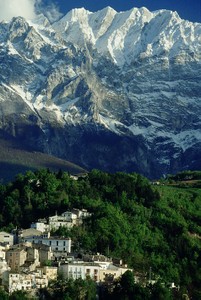Castelli
| Information |
|---|
| Map and contacts |
| Events |
| Castelli Ceramic Arts Market-exhibition |
| Museums |
| Ceramics Museum of Castelli |
| Churches |
| Church and ex Franciscan Convent |
| Church of St John the Baptist |
| St Donato’s Church |
“Capital of the traditional ceramics of Abruzzo”. This is the best way to describe this sensational mountain borough, that has become along the years an indispensable milestone of our regional cultural tourism.
The town commands a wonderful position on top of spur at the foot of the Monte Camicia and dominating the Rio and the Leomagna streams.
In the Middle-ages, exploiting the special clayey conformation of the territory, a community of Benedictine Monks started a flourishing production of ceramics. Castelli than became home to famous masters who served the Kings of Naples and the noble houses of Rome.
The little church of San Donato, that dates back to this “golden period”, has been named the “Sistine Chapel of Italian majolica” by Carlo Levi, because of its marvellous ceiling entirely covered with majolica tiles: the 780 votive tiles decorated with bright colours represent profiles, coat of arms, astronomical symbols, animals and floral patterns
The actual tiles are copies of the originals, that have been partly lost and partly exposed in the Museum of ceramics of Castelli, inside the cloister of the ex-Franciscan convent. Today the ceramics of Castelli are extremely sought-after by collectors and are exposed in world famous museums like the British Museum in London and the Hermitage in St Petersburg.
In addition to the numerous artisan shops spread around the streets of the town, the Istituto d'arte and its splendid ceramic Christmas crib, composed of 60 characters, deserve a visit.
Built in 1601, the Church of San Giovanni Battista keeps a wooden statue of Saint Ann with the child Virgin Mary and a majolica seventeenth century altar piece.
Every summer, between art and tradition, Castelli hosts a ceramic handicraft exhibition-market that that traditionally ends with the “throwing of the plates” from the overhangs above the Leomagna stream.

















